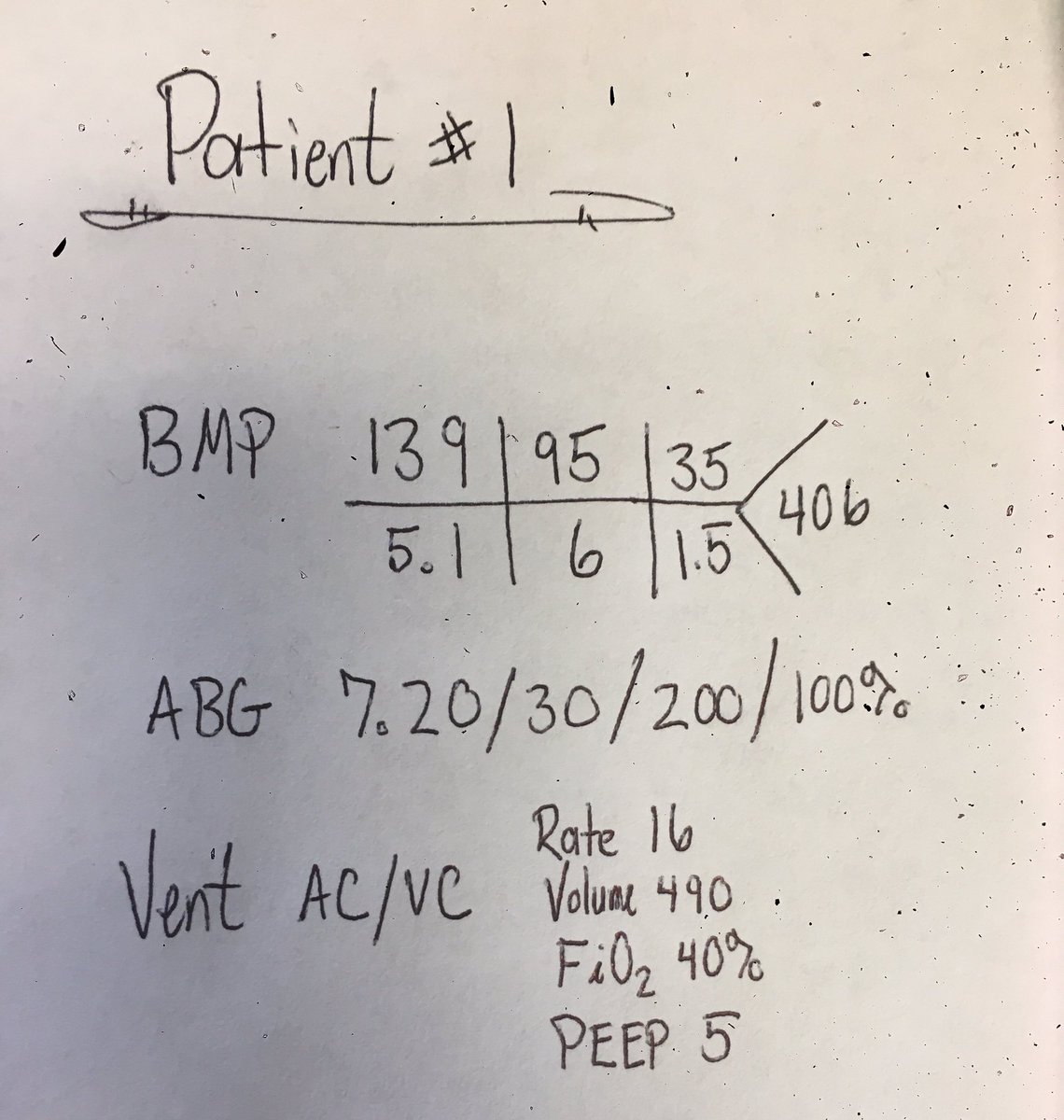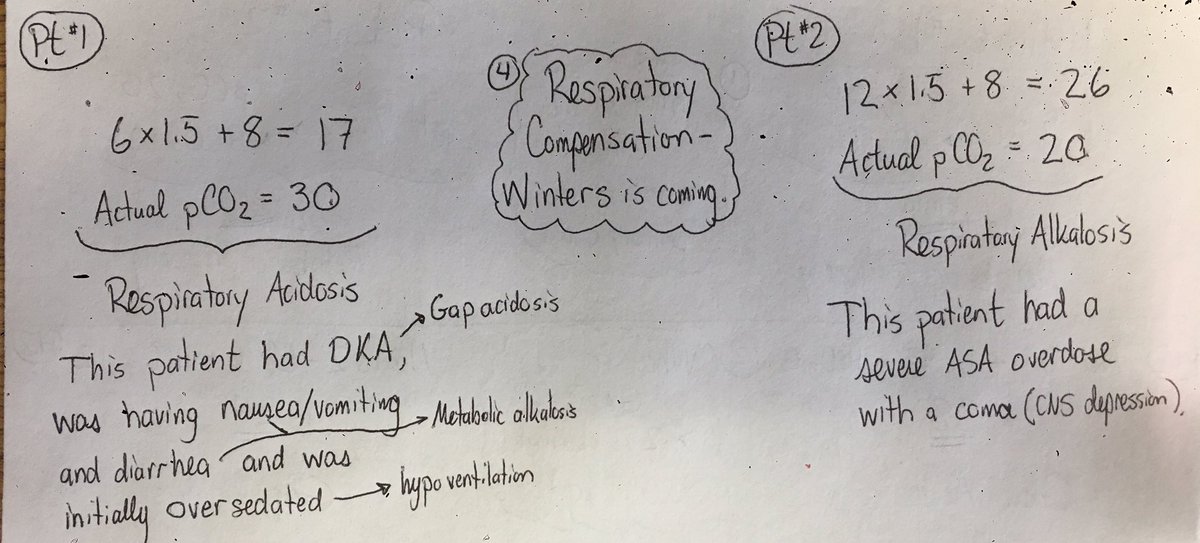You’re still working in the ICU. You get 2 patients back to back, comatose. Little history. Vented.
Patient 1: 22yo female. Found down at home. We don’t know her PMH or meds.

What do you think she has? Say your opinion in the comments!
Great work everyone. Here’s our approach to ABG’s, in four easy steps.
Step 1: What is the -emia?

Note that Patient #1 has elevated glucose. Her corrected sodium would be in the neighborhood of 145.
Use the native, uncorrected sodium in the gap calculation!

Step 3: the delta delta.
This helps you see if there is an additional metabolic disorder ongoing, if you already have a high anion gap acidosis going on.

Step 4: Winters formula.
Lastly, check for respiratory compensation. Winters formula is great for acidoses.
Formulas exist for alkalosis, and for respiratory disorders, but those compensations are less reliable to calculate.

We hop you enjoyed this week’s #PhysioQuizzo! Oddly, we’ve coincided again with @CPSolvers. Go check out their podcast on a metabolic acidosis case!
And see you next week for another riveting #TwitterReport!


















